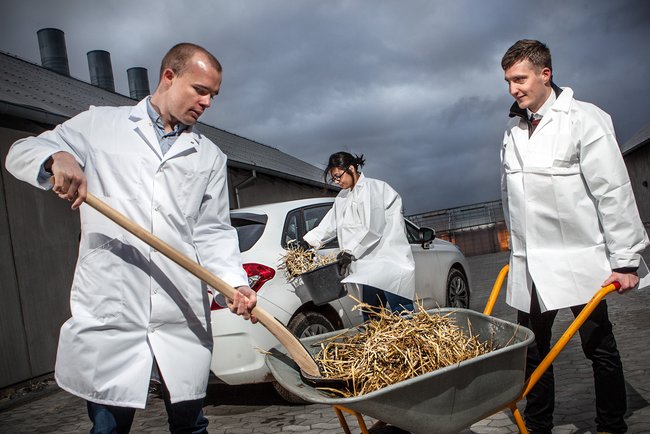Boost to cutting-edge technology with new research project at Aarhus University
Scientists at Aarhus University are up-scaling an HTL facility that is capable of converting wet biomass into crude oil. The facility, which is expected to be ready by the end of 2014, is based on the university’s cutting-edge research.

The HTL (hydrothermal liquefaction) technology, which under high pressure and temperature converts wet biomass into bio-oil, can become a genuine breakthrough in the battle to reduce the dependency on fossil fuels. Although the technology is not completely in its infancy, it has yet to achieve commercial breakthrough, but scientists at Aarhus University are intending to change all that via a new research project which has received 12.6m DKK from DCA – Danish Centre for Food and Agriculture to build a pilot plant.
The pilot plant is based on ground-breaking research conducted by Professor Bo Brummerstedt Iversen from the Department of Chemistry, where they have been working on the HTL technology on small laboratory-scale facilities in recent years. The pilot plant will be much larger and will pose several engineering challenges that require deep technical insight into a number of complex processes. But associate professor Ib Johannsen from the Department of Engineering is making it his job to solve this challenge in close cooperation with his colleague, senior scientist Anders Peter Adamsen.
- We expect to have built an HTL pilot-scale facility at Foulum by the end of 2014. The plant will consist of a flow reactor, with a steady inflow of biomass and with an outflow of bio-oil from the other end of a 120 meter long pipe, where the watery biomass will be heated up to a maximum of 450 degrees and subjected to a pressure of up to 350 bar, explains Ib Johannsen of the system and the process.
It will, however, be a while before scientists from Aarhus University can produce a real alternative to oil. One of the challenges with the HTL process is to reduce the amount of energy needed to heat the biomass.
- One of our criteria for the design of the pilot plant is that it has to recycle the majority of the heat that is used to heat the biomass. The goal is to recycle as much as 85 percent of the heat. If we can’t do that, it will not be possible to proceed with this technology as an alternative to fossil fuels, says Ib Johannsen.
Besides the recycling of process heat, the ambition of the project is to build a plant that is easy to upscale, so that it may eventually become a design that can be used commercially.
The HTL process is extremely interesting because it has a large potential. Unlike other technologies, it does not impound biomass that would otherwise be used as food for humans or animals.
- We intend to use biomasses such as deep litter, the fibrous fraction from biogas plants, energy crops and straw. We can use biomasses with water contents of up to 80 percent, says Anders Peter Adamsen.
Precisely a high water content is ideal for the HTL process, which can be described as a method for removing oxygen and converting the biomass to liquid products. This produces an oil that is similar to crude oil. In addition to oil, there will also be fractions produced containing gas, water and solids.
When exactly HTL plants will be ready for commercialisation, Ib Johannsen has a suggestion for:
- We need to build up experience with the technology over the next two to three years. It will then take a few more years to design larger systems, but this is conditional on getting the good results that we expect to get.
Anders Peter Adamsen supplements:
- The HTL technology has a large potential, but also a number of technical challenges. If there hadn’t been any, Aarhus University would not be involved in developing the technology.
The establishment of the HTL facility also sets the footing for another research project – BioValue SPIR, which has a total budget of 160m DKK and involves a number of Danish partners (www.biovalue.dk). The project has attracted considerable AU resources where scientists, among other things, are studying lignin – a component of biomass – with a view to converting it into higher-value products, such as binders and chemicals for new products.
For more information please contact:
Associate professor Ib Johannsen, Department of Engineering, telephone: +45 8715 5983, Mobile: +45 21356050, email: ibj@eng.au.dk
Senior scientist Anders Peter Adamsen, Department of Engineering, telephone: +45 2514 2599, email: apsa@eng.au.dk
Facts:
The project "Production of bio-oil using HTL technology" is one of four research platforms of the research initiative BioBase that DCA – Danish Centre for Food and Agriculture has launched and is coordinating.
The project will run until the end of 2017.
